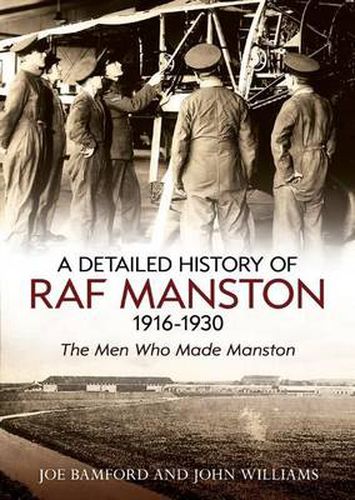Readings Newsletter
Become a Readings Member to make your shopping experience even easier.
Sign in or sign up for free!
You’re not far away from qualifying for FREE standard shipping within Australia
You’ve qualified for FREE standard shipping within Australia
The cart is loading…






A Detailed History of RAF Manston 1916-1930: The Men Who Made Manston covers the development of aviation in Thanet up to and including the period of the First World War. Manston had its origins in the Royal Naval Seaplane Station at Westgate that was later expanded for landplane operations. The fact that the landing ground at Westgate was both dangerous and unsuitable lead to the development at Manston. Lieutenant Spenser Grey was the first airman to land in Thanet and he began a popular trend with various aviators being attracted to the area. In August 1913, The Daily Mail organised the Round Britain Aeroplane Race that both began and ended at Ramsgate giving a great boost to the town. The first unit to be based at Manston was 3 Wing RNAS that moved from Detling in April 1916 and the first CO was appointed in May. During the war, aeroplanes based at Manston and particularly its ‘War Flight’ played an important role in defending the Thames and Medway estuaries. Together with RNAS Eastchurch, Manston’s War Flight of Triplanes, Camels and Pups patrolled the coast and amongst its most famous moments was when on 22 August 1917, a German Gotha bomber was shot down near Vincent’s Farm. The authors give a detailed history of the units that were based at Manston during this period, their operations and the commanding officers. Manston was unique in many ways, but particularly as it was the only airfield to have built an underground hangar for the protection of its aeroplanes. After the First World War, Manston expanded and it took on the role of a training station. This first book in a three-book series will finish approximately at the end of the war period and continue with the growth of the station during the inter-war years.
$9.00 standard shipping within Australia
FREE standard shipping within Australia for orders over $100.00
Express & International shipping calculated at checkout
A Detailed History of RAF Manston 1916-1930: The Men Who Made Manston covers the development of aviation in Thanet up to and including the period of the First World War. Manston had its origins in the Royal Naval Seaplane Station at Westgate that was later expanded for landplane operations. The fact that the landing ground at Westgate was both dangerous and unsuitable lead to the development at Manston. Lieutenant Spenser Grey was the first airman to land in Thanet and he began a popular trend with various aviators being attracted to the area. In August 1913, The Daily Mail organised the Round Britain Aeroplane Race that both began and ended at Ramsgate giving a great boost to the town. The first unit to be based at Manston was 3 Wing RNAS that moved from Detling in April 1916 and the first CO was appointed in May. During the war, aeroplanes based at Manston and particularly its ‘War Flight’ played an important role in defending the Thames and Medway estuaries. Together with RNAS Eastchurch, Manston’s War Flight of Triplanes, Camels and Pups patrolled the coast and amongst its most famous moments was when on 22 August 1917, a German Gotha bomber was shot down near Vincent’s Farm. The authors give a detailed history of the units that were based at Manston during this period, their operations and the commanding officers. Manston was unique in many ways, but particularly as it was the only airfield to have built an underground hangar for the protection of its aeroplanes. After the First World War, Manston expanded and it took on the role of a training station. This first book in a three-book series will finish approximately at the end of the war period and continue with the growth of the station during the inter-war years.